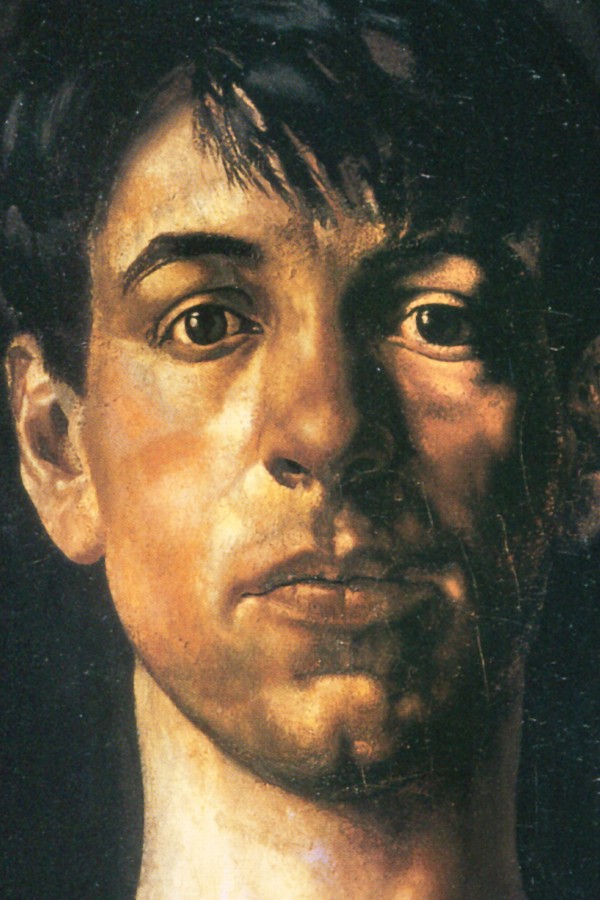What emotions is this person feeling?

Stanley Spencer,
1914
-
Bright emotions
-
Not at all Extremely
-
-
Quiet emotions
-
Not at all Extremely
-
-
Heavy emotions
-
Not at all Extremely
-
-
Sombre emotions
-
Not at all Extremely
-
Compare yourself to others
Choose different variables below, and see the patterns of response reflected in the circle of emotion above. Your responses are the coloured wedges. Others' responses are averaged in the spider graph of lines and dots.

Date: 1914
Creator of the image: Stanley Spencer Date of the image creation: 1914 Medium of the image: Oil on canvas Person depicted: Stanley Spencer Jean-Christophe Ammann, writing in the Tate Gallery journal provides us with detail notes on this image: ‘The self-portrait that Stanley Spencer (1891–1959) made in 1914 at the age of 23 is beautiful beyond all reason […] He worked on it for three months during the first half of the year, and sold it for £20 to the gallerist Edward Marsh, who was to become a lifelong friend. At the time, Spencer was fascinated by portraits from the Italian Renaissance and may well have been inspired by one of the young Botticelli in the National Gallery in London. But none of this is of any significance compared with the vulnerability and openness of this face. It is filled with intense anticipation. And since it is a self-portrait, the young man views himself in a mirror, where he sees himself differently compared with the four previous self-portraits of 1913. These sheets in pencil and ink seem primarily to be about shading and tonalities, as though Spencer already had a clear image in his mind’s eye of the final work. When he realised the oil painting, it was to become a milestone, as important as any Ecce Homo, a visionary projection of the landscape of his soul.’ ‘Sensuality and lucidity, passion and a willingness to give of himself meet in this physiognomy that seems to breathe the world. An air of astonishment passes across this face painted in brown hues: astonishment at itself. Yet in this astonishment there is also a certainty that keeps every avenue open. The face seems younger than his 23 years. The dark eyes have a questioning gaze. They are expectant and hungry, like the lips of the handsome mouth, as full as a ripe fruit. The curved eyebrows are high, underlining the sense of astonishment; the young man’s hair falls sideways across his forehead, accentuating his youthful looks. And then there is the neck, like a stem — one side bathed in bright light — bearing the browned head aloft. Yes, the neck carries the head like a trophy; powerfully and unmistakably it reinforces the dream-like aspect of this countenance, this seductively silvery gaze ...’